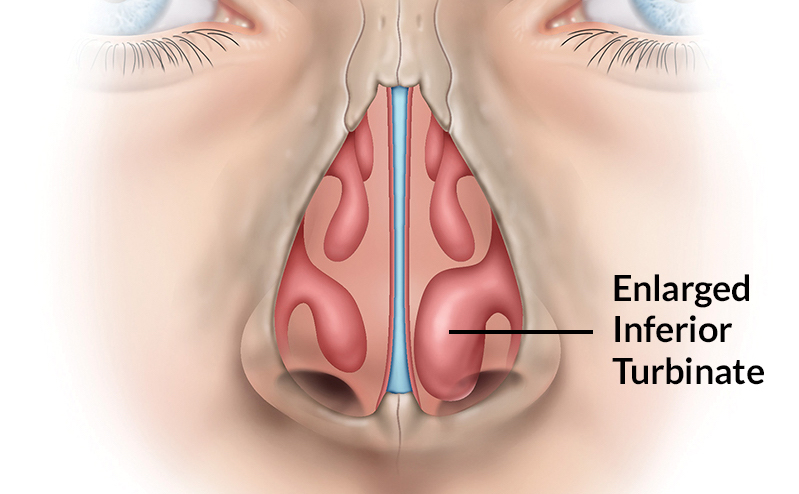
Laser Inferior Turbinate Reduction
Inferior nasal turbinectomy or more precisely, inferior turbinate reduction refers to a procedure designed reduce the size of these structures.
The turbinates are located inside the side walls of the nasal passages and are responsible for filtering, humidifying and streamlining the flow air we breathe.
The turbinates can become enlarged due to allergy, infection and inflammation. They can lead to nasal congestion, snoring, eustachian tube dysfunction and may contribute to obstructive sleep apnoea.
The procedure can be performed using various techniques. I favour laser or electrocautery because in my own personal experience these techniques (in comparison to radiofrequency ablation or simple out-fracture alone) provide the best chance of long-lasting benefit without the need for further surgery.
It’s important not to perform a complete/ near complete resection to avoid the devastating complication of “empty nose syndrome”. This is a sensation of severe nasal blockage and dryness which is difficult to remedy.
My focus is therefore on shrinking the turbinate and pushing them outward to make further space.
Turbinate Reduction Procedure
The procedure will usually be performed under general anaesthesia. There are no incisions, everything is performed via the nostrils.
I use a carbon dioxide laser or electrocautery to scarify or vaporize the excess tissue. These techniques also help to seal blood vessels, reducing post operative bleeding.
I then push/ flatten the turbinate bones to the side wall of the internal nose.
I place absorbable nasal packs in each of the nasal cavities to prevent post operative bleeding and adhesion (bridging scar) formation between the turbinate and nasal septum.
I also supply my patients with a course of topical and tablet antibiotic along with nasal decongestant drops to prevent infection.
Often, the inferior turbinates are reduced in conjunction with a septoplasty procedure and the recovery and aftercare for both is similar (please see my article on “septoplasty” for specific post operative care instructions).
The majority of patients will be able to return to normal function after the packs are removed at two weeks post-op. I encourage my patients to spray or douche the nose with salt water rinse solutions for a further month at least, to prevent troublesome crust formation on the turbinates.
You can expect a complete recovery by about 6 weeks after the operation.
